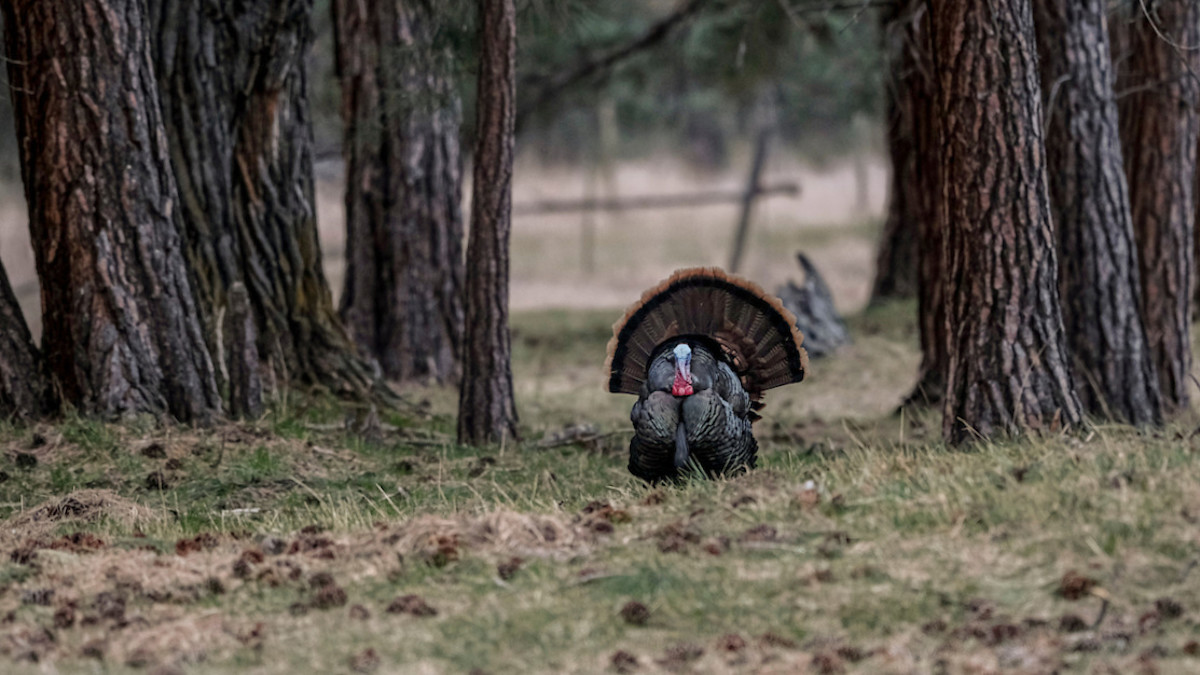
Spring weather equals fronts, and fronts mean wind. This is turkey hunting reality, no matter how much we may wish for calm days with bluebird skies. While it may be tempting to skip the windy days, don’t. There’s still a good chance to fill your tag even in less-than-ideal conditions.
To do this, you need to understand what turkeys will be doing at that moment in your neck of the woods and how serious winds will influence their actions. It’s a weakness you can exploit, but you need to understand why turkeys are averse to high winds in the first place.
Figure Out What Turkeys Hate I shouldn’t be speaking for turkeys, but I’m going to. They hate being in the wide-open where the wind is just smoking along. But they also hate being in dense cover when it’s windy, likely because it’s much harder to detect incoming predators. This leaves them on the hunt for semi-protected areas.
Whether he stays home or travels to other windy states like Nebraska, Colorado turkey hunter and outdoor writer, Jace Bauserman, spends a lot of time looking for these spots. “You can expect high winds where I hunt,” Bauserman said. “The birds I target seem to respond to this by heading to semi-open areas where they can feed and loaf around.”
Finding areas where the birds can do their thing but still detect danger around them before it gets too close is key to this strategy. This, Bauserman noted, is how he and his hunting partner tagged out on an early-season Nebraska bowhunt this spring.
“We watched a huge flock that was routinely visiting an ag field, suddenly drop into a 150-yard long clear cut that was tucked out of the wind,” Bauserman said. “They wanted to be in the food, but the wind had them nervous so they opted for safety. We used that knowledge to slip in and set blinds, which led to us calling in a string of longbeards in that clear cut.”
Locating Calm Areas It doesn’t take much of a reduction in wind to position turkeys in specific spots. A low area in a field will cut the wind by 20 or 30%, which might be enough. At least it was for my twin daughters when I took them out for their first two afternoons of our Minnesota season this year.
From several days of scouting, I knew that we’d be dealing with flocked-up birds. I also knew they’d congregate in a low spot in a cornfield as they left the roost and when they were headed back to bed for the evening. It took two short sits for my daughters to fill their tags, even though we battled winds that blew up to 35mph.
Take note of where you see (and hear) birds when the wind is blowing as well as the areas you find yourself in that seem calm during windy conditions. Those spots are vital in finding birds when the forecast calls for more wind.
Windy Gear Realities For the run-and-gun crowd, the worst the wind will do is spin decoys if they aren’t set up properly. I tend to downsize my spread for windy conditions and always stake them low to the ground with sticks on each side of the tail to prevent spinning. This allows for a little movement, but not the bird-spooking helicoptering of a decoy cut loose on its axis.
If you plan to ride out the gusty stuff in a blind, you have to think about your decoys and your temporary hide. According to Bauserman, this starts with an unconventional move.
“Take the stakes that come with your ground blind and throw them in the trash. Carry real stakes, like the kind that screw into the ground or even actual trampoline stakes, and then pin down the inside corners and the outside tie-downs of your blind.”
Strong winds can easily collapse a hub, or uproot a poorly staked blind and send it tumbleweed style across the landscape.
You should also consider your calling. Make sure you’re calling loud enough. Soft purrs and clucks on a pot call won’t cut it. The turkeys likely can’t hear you if you’re not using a box or mouth call during high winds. The louder you can go with your yelps and cutts, the more likely you will rise above the wind and be heard by nearby gobblers.
Conclusion Turkey hunting in high winds sucks, but not as much as not turkey hunting.
Consider where the birds will choose to spend their time during these conditions, and plan your hunts around them. Pay attention to bird behavior during frontal winds, and then use that intel to plan future hunts. Lastly, make sure your gear and calls are up to the task when you do get out there.
Once you do, you’ll realize how callable—and killable—turkeys can be in high winds.
Feature image via John Hafner.





Conversation